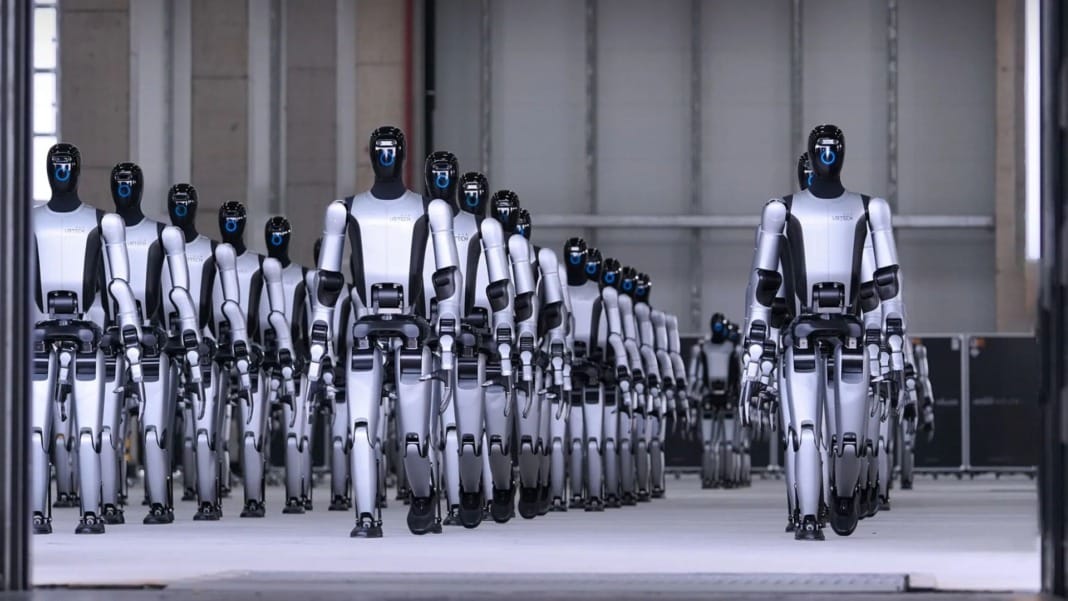UBTech, the robotics firm behind the Walker S2 android, has secured a significant contract to deploy its humanoid robots at border crossings between China and Vietnam. The deal, valued at US$37 million, marks one of the first operational roles for the Walker S2, which has recently drawn online attention for its eerily coordinated mass-production video.
First deployment at the border
According to reports by SCMP, the Chinese province bordering Vietnam has contracted UBTech to provide robots capable of assisting with patrols, guiding travellers, and supporting logistical operations. The Walker S2 is designed for rapid deployment, with the ability to swap its own battery in under three minutes, making it a versatile addition to border security and administrative tasks.
The announcement comes just weeks after UBTech posted a YouTube video showcasing what it described as the “world’s first mass delivery of humanoid robots.” The footage featured rows of Walker S2 units moving in unison, marching into cargo containers, and preparing for delivery. The display drew comparisons to the 2004 film I, Robot, in which a vast army of humanoid robots is revealed, emphasising the uncanny realism of the Walker S2.
UBTech celebrated the milestone in its video caption, stating: “Huge milestone achieved! World’s first mass delivery of humanoid robots has completed! Hundreds of UBTECH Walker S2 have been delivered to our partners. The future of industrial automation is here. March forward to transformation!” Many of the units showcased in the video are now expected to be deployed at the China-Vietnam border.
Advanced capabilities of walker s2
The Walker S2 measures 5 feet 7 inches tall, weighs 154 pounds, and can walk at up to 4mph. It features two dexterous hands equipped with tactile sensors and is powered by an onboard large language model for voice communication through its integrated microphones and speakers. While UBTech has not revealed the Walker S2’s price, its capabilities position it among the most advanced humanoid robots currently in production.
The Walker S2 is not the only humanoid robot attracting attention. Other models, such as Figure 03, featured on the cover of Time Magazine, and the 1X Neo Beta, advertised as a US$20,000 home assistant, are also emerging as potential companions and industrial helpers, highlighting a growing market for advanced robotics.
The future of robots in industry and public service
Robots, unburdened by emotions or bias, could provide efficient and consistent support in roles that require precision or repetitive work. Governments and industries are increasingly exploring artificial intelligence and automation to handle tasks ranging from logistics to security.
SCMP reports that UBTech aims to deliver 500 Walker S2 robots by the end of 2025, with a longer-term goal of 10,000 units by 2027. As the technology develops, humanoid robots may become commonplace not only in industrial and commercial settings but also in homes, stores, offices, and border checkpoints. The prospect of a robotic workforce is rapidly moving from science fiction into reality, raising questions about the future of human-robot collaboration.
The deployment of UBTech’s Walker S2 at international borders highlights the accelerating role of AI and robotics in everyday life, signalling a new era for both industry and public service.





